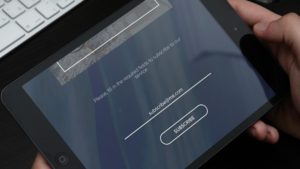By Florian Geheeb, Global Director Advertising Sales at Sportradar
How to use data to lower customer acquisition costs
In today’s digital landscape there are more ways than ever to interact with customers. When trying to understand what drives a customer to purchase, elements of a user’s digital journey can be tracked using tools such as link codes for social media or affiliate marketing or pay-per-click campaign data.
Whilst other, less tangible drivers of acquisition, like radio or television adverts, shouldn’t be ignored, it’s the growth of digital marketing and the increasingly sophisticated insights collected from digital touchpoints that influence customer purchase.
The sports betting industry has seen significant digital transformation and as operators adopt a digital first approach, they’re capturing greater amounts of data and insights about the end users’ betting behaviours and preferences, betting frequency and lifetime value. It’s this data, anonymised to protect the private activity of individuals online while preserving the credibility of the data collected, that operators are using to deliver highly targeted marketing campaigns which provide a more efficient and effective means of acquiring new customers
Understanding and acting on data is the key to success
The importance of measuring and understanding data across the marketing funnel cannot be overstated. Research from a recent Salesforce **study showed that 78% of customers need multiple channels to complete a single transaction. Therefore, a last-click attribution model, used by many businesses to measure the effectiveness of acquisition channels, tells an incomplete story of a customer’s journey.
As outlined in our 2022 whitepaper How to control customer acquisition costs in sports betting, to address this common so-called “attribution gap” operators should instead adopt a multi-touch attribution approach which measures the contribution of every channel, across each stage of the funnel, from first impression, down to conversion.
With this data at hand, companies can build an accurate picture of what drives their customers to make a purchase and adapt their marketing strategies accordingly.
This visibility combined with a greater understanding of the customer journey can reduce CPA by optimising every stage of the acquisition funnel. Visibility of multiple touchpoints can allow for the redirection of marketing budget to the highest-performing channels, ensuring both optimal acquisition success and effective allocation of campaign resources.
Optimising through personalisation and exceptional execution
Optimising top of the funnel activity is about making sure you have a consistent brand message and positioning. Whereas for many of our clients, lower funnel optimisation relies on how efficiently they can display ads.
The application of artificial intelligence (AI) and machine learning (ML) is advancing marketing efficiency. For example, programmatic advertising is hyper targeted, serving the right content to the right person at the right time on their preferred platform. Similarly, Dynamic Creative Optimisation solutions generate an unlimited supply of advert variations which are delivered at speed, helping operators to rapidly scale personalised advert creative.
Once the advert is displayed on a website and generates interest, the task is to ensure customers remain engaged, which can be done through personalising offers and sign-ups to increase the likelihood of conversion and improve the user experience.
Typical users see more than 1,000 digital ads daily but, according to The Trade Desk, average click-through rate remains below 1%. In today’s attention economy, display ads must be exceptional in execution and particularly well-targeted. We have seen this achieved in our field by feeding AI and ML technology with millions of data points to engineer personalised display adverts, based off customer insight and interests, which drive greater interactions and increase CTR.
Use of data to upgrade traditional marketing approaches
For many in sports betting, sponsorships have historically been, and continue to be, an important vehicle to raise brand awareness and nudge individuals towards the sales funnel.
In fact, a US study carried out before the start of the country’s major leagues’ 2021/22 seasons found that nearly $400 million had been invested in betting sponsorships across the NBA, NFL, NHL, MLB and MLS since the repeal of PASPA. Whilst it can be difficult to track the impact of this type of offline activity, data is again maximising the efficacy of this traditional approach to marketing.
Technology is increasingly helping rightsholders and sportsbook operators to activate partnerships in the digital space to get more tangible results from sponsorship deals. ad:s, Sportradar’s data driven performance marketing service, is enabling rights holders to match their website content with dynamic sportsbook advertisements that feature contextually relevant messages for fans which has shown to increase CTR’s by to 225%.
The future
With data now being considered “the world’s most valuable resource”, its understanding and effective application is swiftly becoming an imperative for marketers across all industries. For those in sports betting, the industry’s inescapable affiliation with data has necessitated this shift and in doing so, has revealed key marketing lessons for all to consider.









